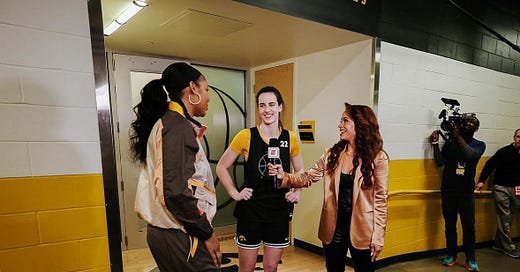Five Out: The South Carolina coverage gap, Player of the Year races and Caitlin Clark is the needle in the sport
Caitlin Clark’s needle, reassessing a prior Dawn Staley take, ranked Fairfield, the A-10 and Pac-12 Player of the Year. Andrew’s thoughts on the world of women’s hoops…
Well…this weekend was both a celebration of the game and a discourse dumpster fire. I think there’s a separate column to come about women’s basketball media, national media and just how that ecosystem works (for good and bad). In the meantime!
Caitlin Clark is the needle…
Like it or not, the Iowa superstar moves the dial.
What the wanna-be media critic in…
Keep reading with a 7-day free trial
Subscribe to No Cap Space WBB to keep reading this post and get 7 days of free access to the full post archives.




